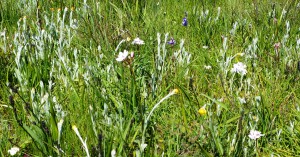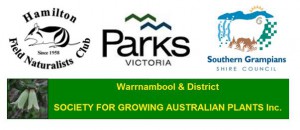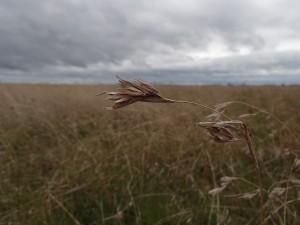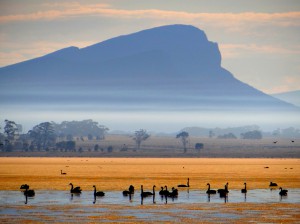
Threatened flora of the Western Volcanic Victorian Plains
The Western Volcanic Plains in Victoria is approximately 2.3 million hectares in area and lies south of the Western Uplands, stretching from the Otways in the south-east, to the South-Australian border in the south-west. It encompasses part of the broader Victorian Volcanic Plains (VVP) bioregion, characterised by relatively fertile basalt sediments formed by volcanic lava flows dating from 5 million years ago. Endangered vegetation communities such as Plains Grasslands and Plains Grassy Woodland are iconic to this bioregion, notably for their spectacular and colourful spring and summer flowering displays, as well as for their rarity. Since European Settlement, more than 99% of grasslands in the VVP has been lost or substantially modified through clearance and conversion for pasture, grazing, and settlement, as well as through the lack of important disturbance regimes such as fire, which are critical to maintaining an open vegetation structure and promoting recruitment of native flora species.
In the Western Volcanic Plains, it is estimated that less than 0.1% of native grasslands, and less than 5% of grassy woodlands remain. As a result, there are a high number of threatened and endemic flora and fauna species within these remnant vegetation communities. Their associated habitat areas are therefore highly significant for biodiversity conservation.
Nature Glenelg Trust, through the funding support of the Victorian Government – Department of Environment and Primary Industries’ (DEPI) Victorian Environmental Partnerships Program (VEPP), is delivering a number of flora conservation projects within the Western Volcanic Plains. These activities will aim to restore and enhance habitat values at three unique public reserves to promote the persistence of endemic flora populations.
Nature Glenelg Trust also supports key working partners and community groups in establishing long term management visions for the reserves, to ensure conservation values at the site are secured into the future.






